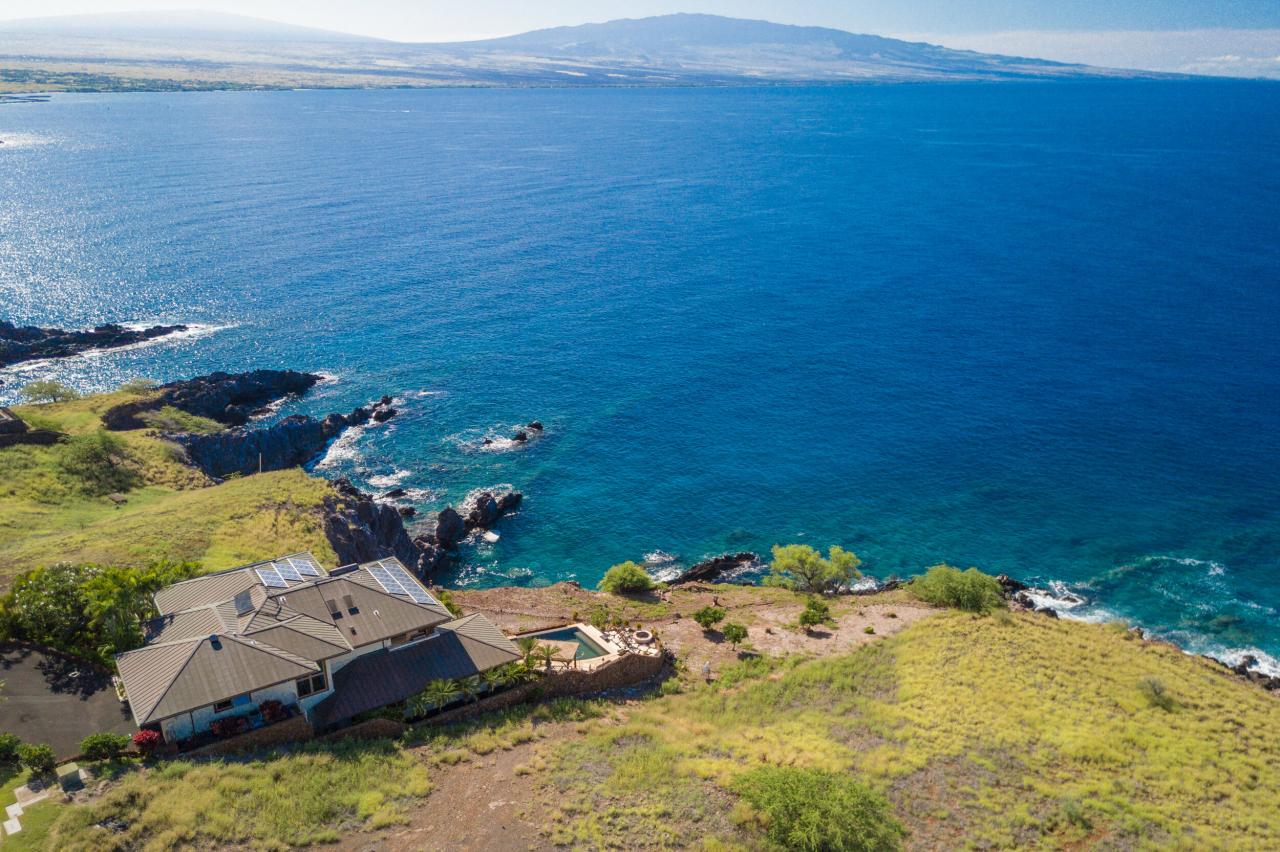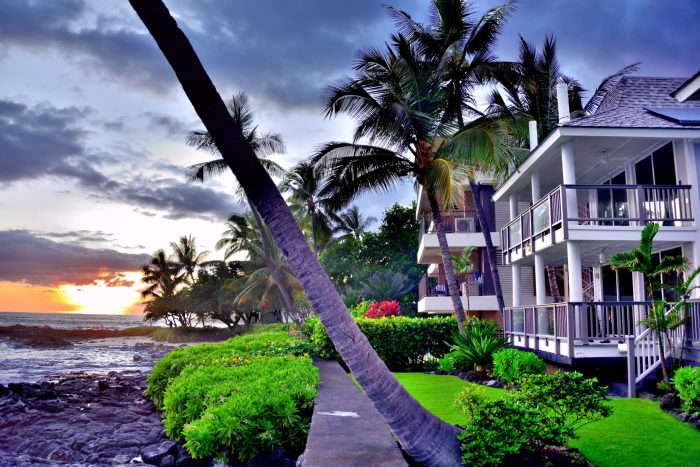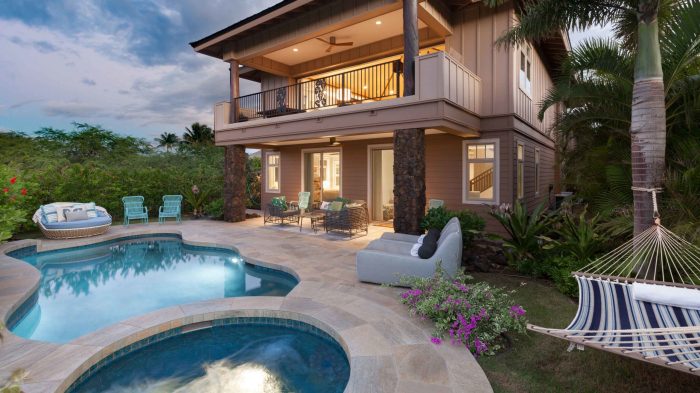Houses for Rent Big Island Your Island Paradise Awaits
Big Island Rental Market Overview
Houses for rent big island – The Big Island of Hawaii presents a diverse and dynamic rental market for houses, influenced by location, property type, and seasonality. Demand fluctuates throughout the year, peaking during the tourist season. Understanding the current market conditions is crucial for prospective renters.
Popular Rental Areas
Several areas consistently rank high in rental demand. Kona, with its stunning coastline and resort amenities, is highly sought after. Hilo, the island’s largest city, offers a more urban experience with a wider range of housing options. Areas near Volcano National Park attract those seeking a unique natural environment. Coastal communities like Kailua-Kona and Waimea also enjoy significant popularity.
Rental Price Comparison Across Regions
Rental prices vary significantly across the Big Island. Coastal areas, particularly those with ocean views, command premium prices. Areas closer to major towns and cities also tend to be more expensive. Rural areas generally offer more affordable options, but may involve longer commutes.
Average Rental Costs by House Size and Area
| Area | 1-Bedroom | 2-Bedroom | 3+ Bedrooms |
|---|---|---|---|
| Kona (Coastal) | $2,500 – $4,000 | $3,500 – $6,000 | $5,000+ |
| Kona (Inland) | $1,800 – $2,800 | $2,500 – $4,500 | $3,500 – $5,500 |
| Hilo | $1,500 – $2,500 | $2,000 – $3,500 | $3,000 – $4,500 |
| Rural Areas | $1,200 – $2,000 | $1,500 – $2,800 | $2,000 – $3,500 |
Note: These are average estimates and actual prices can vary based on specific property features and market conditions.
Types of Rental Properties Available
The Big Island offers a variety of rental properties to suit different lifestyles and budgets. Understanding the distinctions between these types is key to finding the right fit.
Types of Rental Houses and Their Amenities
- Single-Family Homes: These offer privacy and space, often including yards and garages. Amenities can range from basic to luxurious, depending on the property. Some may feature ocean views, private pools, or large gardens.
- Condos: Condominiums typically offer shared amenities like swimming pools, fitness centers, and security. They often provide a more maintenance-free lifestyle.
- Townhouses: These are multi-unit dwellings, usually attached to other units. They may offer some shared amenities and generally require less maintenance than single-family homes.
Pros and Cons of Each Property Type
- Single-Family Homes: Pros: Privacy, space, potential for outdoor living. Cons: Higher maintenance responsibilities, potentially higher costs.
- Condos: Pros: Shared amenities, less maintenance, often more secure. Cons: Less privacy, potential for noise from neighbors, shared common areas may require compromises.
- Townhouses: Pros: More affordable than single-family homes, often located in convenient locations. Cons: Less privacy than single-family homes, shared walls with neighbors.
Factors Influencing Rental Costs
Several factors significantly impact rental prices on the Big Island. Understanding these factors can help prospective renters make informed decisions and manage expectations.
Key Factors Affecting Rental Prices
Location is paramount, with coastal properties and those close to amenities commanding higher prices. Property size, condition, and the presence of desirable amenities (like ocean views, pools, or updated appliances) also influence rental costs. The overall condition of the property, including upgrades and maintenance, plays a substantial role.
Ocean Views and Beach Proximity
Properties with ocean views or proximity to beaches are highly sought after and, therefore, command significantly higher rental rates. The degree of ocean visibility and the distance to the beach directly impact the price.
Rural vs. Urban Rental Costs
Rural areas generally offer lower rental costs compared to urban centers like Hilo or Kona. However, this often comes with trade-offs such as longer commutes and limited access to amenities.
Property Taxes and Local Regulations
Property taxes and local regulations influence rental prices indirectly. Landlords factor these costs into their rental rates, which can vary based on the specific location and type of property.
Finding Rental Properties: Houses For Rent Big Island
Finding a rental property on the Big Island involves several avenues. A strategic approach can increase the chances of finding a suitable property efficiently.
Methods for Finding Rental Houses
- Online Real Estate Portals: Websites like Zillow, Realtor.com, and Craigslist often list available rentals.
- Local Real Estate Agents: Agents can provide valuable insights into the market and assist with the search process.
- Word-of-Mouth: Networking within the community can sometimes uncover hidden rental opportunities.
Rental Application Process
The typical application process involves submitting an application form, providing proof of income and identification, and undergoing a credit and background check. Landlords often require a security deposit and first month’s rent upfront.
Necessary Documentation
- Completed rental application
- Proof of income (pay stubs, tax returns)
- Valid identification (driver’s license, passport)
- References (previous landlords or employers)
- Credit report
Step-by-Step Guide for Renters
- Determine your budget and desired location.
- Search online real estate portals and contact local agents.
- Schedule viewings of potential properties.
- Submit a completed rental application with all required documentation.
- Negotiate lease terms and sign the agreement.
Illustrative Examples of Rental Properties
The following are examples of rental properties illustrating the diversity available on the Big Island. These are hypothetical examples and do not represent specific listings.
Example 1: Oceanfront Condo in Kona

Source: squarespace.com
This 2-bedroom, 2-bathroom condo offers stunning ocean views and access to resort amenities, including a pool and fitness center. Rent: $4,500 per month. Ideal renter: Affluent couple or individual seeking a luxurious lifestyle. Drawback: High rent and potential for noise from nearby activities.
Example 2: 3-Bedroom Home in Hilo, Houses for rent big island

Source: thebigislandbeachhouse.com
A spacious 3-bedroom, 2-bathroom home located in a quiet Hilo neighborhood, close to schools and shopping. Rent: $2,800 per month. Ideal renter: Family or group of roommates seeking a comfortable and convenient location. Drawback: May lack ocean views or resort-style amenities.
Example 3: 1-Bedroom Cottage near Volcano National Park
A cozy 1-bedroom cottage nestled in a tranquil setting near Volcano National Park, ideal for nature lovers. Rent: $1,500 per month. Ideal renter: Single individual or couple seeking a peaceful retreat. Drawback: Limited access to amenities and potential for limited cell phone service.
Lifestyle Considerations
Choosing a rental location on the Big Island involves considering lifestyle preferences and priorities. Different areas offer distinct advantages and disadvantages.
Lifestyle Implications of Different Areas

Source: paradiseinhawaii.com
Kona offers a vibrant resort lifestyle, while Hilo provides a more urban experience. Volcano offers a unique immersion in nature. Commute times vary significantly depending on location and chosen mode of transportation. Community atmospheres also differ across regions, from bustling tourist areas to quieter, more secluded communities.
Pros and Cons of Living in Various Regions
- Kona: Pros: Beautiful beaches, resort amenities, vibrant nightlife. Cons: Higher cost of living, heavy tourist traffic.
- Hilo: Pros: More affordable housing, diverse cultural scene, access to amenities. Cons: Can be rainy, less direct beach access compared to Kona.
- Volcano: Pros: Stunning natural beauty, proximity to Volcano National Park, peaceful atmosphere. Cons: Limited amenities, longer commutes to larger towns.
Unique Aspects of Big Island Living
Living on the Big Island involves adapting to volcanic activity (including potential volcanic hazards), diverse weather patterns (ranging from tropical rainforests to arid deserts), and a rich cultural heritage. Understanding these aspects is crucial for a fulfilling experience.
FAQ Summary
What is the average security deposit for rental houses on the Big Island?
Security deposits typically range from one to two months’ rent, but this can vary depending on the property and landlord.
Are pets allowed in most rental properties on the Big Island?
Pet policies vary widely. Some landlords readily accept pets, while others have strict restrictions or additional fees. Always inquire about pet policies before applying.
How long is the typical lease term for rental houses on the Big Island?
Lease terms commonly range from six months to one year, but shorter-term rentals may be available, particularly in tourist areas. Negotiation is key.
What are the typical utilities included in rent on the Big Island?
This varies significantly. Some rentals include water and garbage collection, while others may require tenants to pay for all utilities (water, electricity, gas, internet, etc.). Always clarify included utilities before signing a lease.












